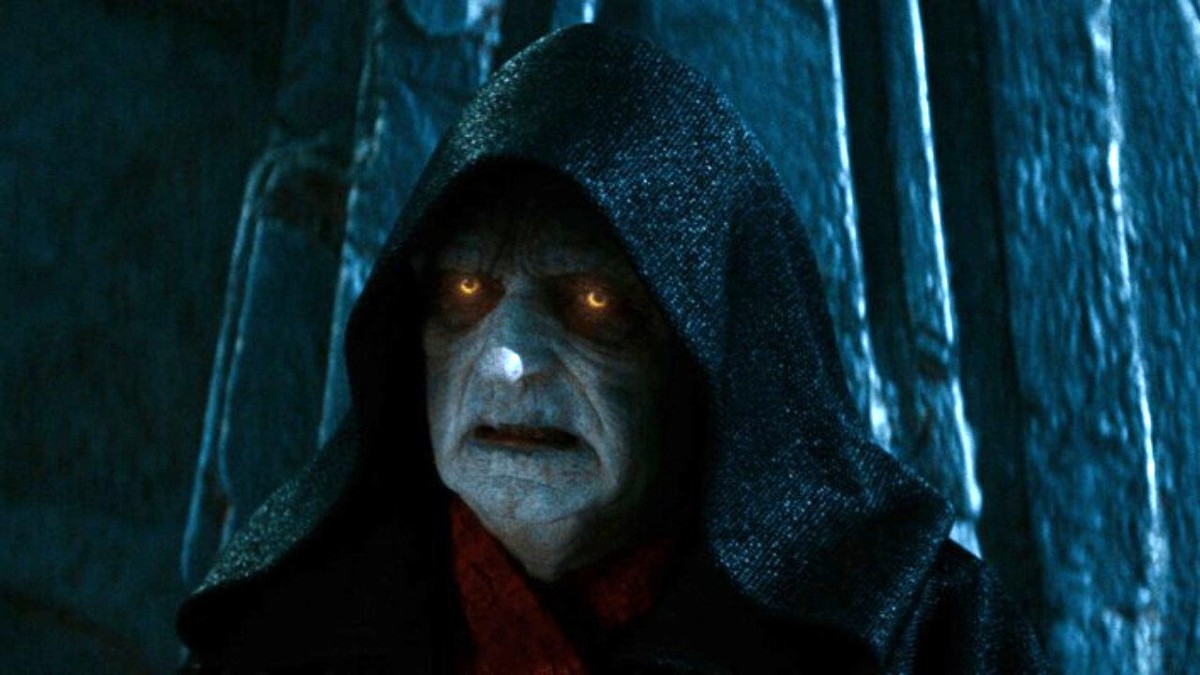‘The Bad Batch’ Confirms Our Speculations About Project Necromancer

The Bad Batch season 3 finally confirms what the mysterious Project Necromancer is and, in doing so, provides further insight into Palpatine’s (Ian McDiarmid) resurrection.
Star Wars is known for telling stories out of order, considering many of its movies and TV shows take place in different timelines. So when The Mandalorian season 3 first mentioned Project Necromancer, viewers had a feeling they had already seen the results of this initiative. After all, the Pedro Pascal-led series does take place over a decade before the sequel trilogy. Meanwhile, the first time Project Necromancer is addressed is when Moff Gideon (Giancarlo Esposito) meets with Imperial Remnant leaders via hologram. Gideon’s conversation with the leaders mentions Grand Admiral Thrawn’s (Lars Mikkelsen) potential return to the galaxy, but Gideon suggests that the Imperial Remnant seek a different leader. He is then informed that the purpose of Project Necromancer is to procure an alternative successor to the Empire.
Necromancy refers to the practice of magic used to communicate with the dead. Based on the conversation, it seems that Imperial forces seek to raise someone from the dead to lead the Empire they wish to re-establish. Viewers instantly suspected the project related to Palpatine. He was the emperor once before, and Star Wars: The Rise of Skywalker revealed his resurrection years before The Mandalorian season 3 premiered. Now, The Bad Batch is further exploring the concept of Project Necromancer.
The Bad Batch confirms Project Necromancer’s purpose

The first three episodes of The Bad Batch season 3 are dedicated to explaining Project Necromancer. Not only does the show confirm that the project is related to Palpatine, but it also reveals that the project started much earlier than initially thought. The Bad Batch takes place during the early years of the Empire immediately following Order 66. As a result, Palpatine is very much still alive. So, why is a resurrection project underway for someone still living?
The thing is, Palpatine never planned to give up the throne. Although he chose Darth Vader as his apprentice and heir, he wasn’t going to hand over his empire so easily. As a result, Palpatine instigated Project Necromancer himself. In case of injury or death in old age, the emperor wanted a backup plan. Hence, he wanted a clone host body that he could transfer his consciousness into if the need ever arose. In this way, he would live and rule his empire forever. However, The Mandalorian confirms that even nearly a decade after Palpatine’s death, the project hasn’t succeeded in resurrecting him or preventing his death in the first place.
In The Bad Batch, it is revealed that the project hit a roadblock when it came to midi-chlorians. Midi-chlorians are microscopic living organisms that reside in the cells of all living things and boast a powerful connection to The Force. One’s Force-sensitivity is largely determined by the concentration of midi-chlorians in one’s cells. However, the scientists working on Project Necromancer on Mount Tantiss ran into a problem with the discovery that midi-chlorians are rejected by clones. As a result, Dr. Hemlock (Jimmi Simpson) and Nala Se (Gwendoline Yeo) need to find another way to clone Palpatine without diminishing his M-count.
In the third episode of season 3, “Shadows of Tantiss,” Chief Scientist Emerie Karr (Keisha Castle-Hughes) seems to have found the solution. Upon taking a sample of Omega’s (Michelle Ang) blood, Emerie finds that her body may be compatible with hosting midi-chlorians, unlike the other clones who reject the organisms. The episode leaves us with many questions regarding how Omega’s body can host midi-chlorians, if this was an intentional design, and what it means for Project Necromancer.
Learning the history and context of Project Necromancer is quite interesting, considering it led to Palpatine’s resurrection and Rey’s (Daisy Ridley) existence. In The Rise of Skywalker, it’s revealed that Rey’s father was meant to be a vessel for Palpatine. However, the clone had no connection to the Force, making him useless to the project. We now know that Rey’s father was likely part of Project Necromancer. Additionally, although he boasted no connection to the Force, Rey had a naturally high M-count, allowing her to ultimately defeat Palpatine.
The Bad Batch confirms that it was ultimately Palptine’s own plans that led to his second demise. It also provides some interesting context on M-counts and the ability of clones to potentially be Force-sensitive. Meanwhile, it seems season 3’s exploration of Project Necromancer isn’t over yet, meaning some more interesting probes into the biology of Star Wars may be in store.
(featured image: Disney+)
Have a tip we should know? [email protected]